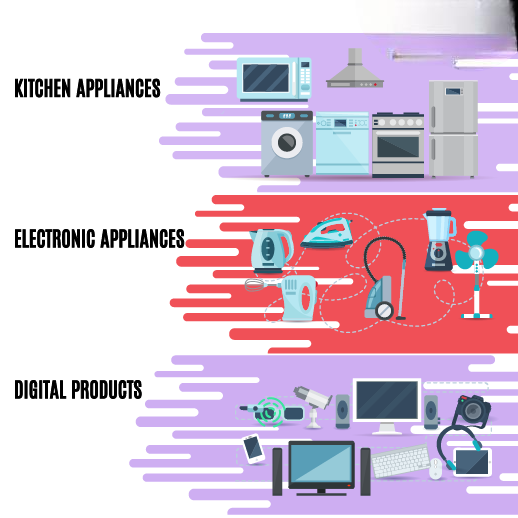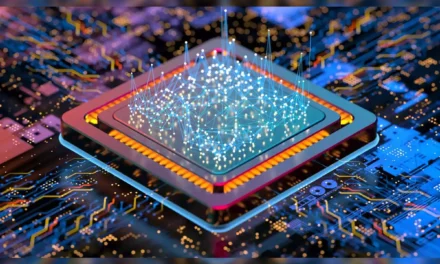Household appliances rely on various electrical devices to perform their functions efficiently and safely. These devices can be broadly categorized into components for power supply, control, safety, and functional operations. Below is an overview of common electrical devices used in household appliances:
1. Power Supply Devices
These components manage and adapt the electrical power required by the appliance.
a) Transformers
- Function: Step up or step down the voltage to suit the appliance’s requirements.
- Examples:
- In microwave ovens (to generate high voltage for magnetrons).
- In chargers or adapters for small devices.
b) Rectifiers and Inverters
- Function:
- Rectifiers: Convert AC (alternating current) to DC (direct current).
- Inverters: Convert DC to AC, often with precise frequency control.
- Examples: Power supplies in refrigerators, air conditioners, and induction cooktops.
c) Voltage Regulators
- Function: Stabilize voltage to ensure consistent appliance operation.
- Examples: Found in TVs, computers, and other sensitive electronic devices.
d) Batteries
- Function: Provide a portable or backup power source.
- Examples: Rechargeable batteries in vacuum cleaners, cordless tools, and remote controls.
2. Control Devices
These devices regulate the appliance’s operation, ensuring efficiency and user customization.
a) Switches
- Function: Allow manual or automatic control of electrical circuits.
- Types:
- Toggle switches: On/off control.
- Push-button switches: Found in devices like mixers and blenders.
- Rotary switches: Used in fan speed controls or oven temperature settings.
b) Relays
- Function: Electrically operated switches to control high-power circuits with low-power signals.
- Examples: Found in washing machines, dryers, and dishwashers.
c) Timers
- Function: Automate operations for a set duration.
- Examples: Used in microwaves, washing machines, and ovens.
d) Thermostats
- Function: Regulate temperature by switching circuits on or off based on set thresholds.
- Examples: Found in refrigerators, air conditioners, and water heaters.
e) Sensors
- Function: Detect environmental or operational conditions (temperature, humidity, motion, etc.) to adjust performance.
- Examples:
- Temperature sensors: In HVAC systems and ovens.
- Moisture sensors: In dryers.
- Motion sensors: In lighting or security systems.
3. Safety Devices
Safety components protect appliances and users from electrical faults.
a) Fuses
- Function: Protect circuits by breaking the connection in case of an overload or short circuit.
- Examples: Built into power supplies of appliances like TVs and microwaves.
b) Circuit Breakers
- Function: Automatically cut power during overload or short circuits and can be reset after tripping.
- Examples: Often integrated into home electrical panels serving appliances.
c) Ground Fault Circuit Interrupters (GFCIs)
- Function: Disconnect power when a ground fault is detected, reducing the risk of electric shock.
- Examples: Used in kitchen and bathroom appliances like hairdryers or electric kettles.
d) Thermal Cutoffs
- Function: Prevent overheating by interrupting the power supply when a specified temperature is exceeded.
- Examples: Found in irons, heaters, and toasters.
4. Functional Devices
These are the primary working components that help appliances perform their tasks.
a) Motors
- Function: Convert electrical energy into mechanical motion.
- Examples:
- AC motors in washing machines and fans.
- DC motors in vacuum cleaners and food processors.
b) Heating Elements
- Function: Generate heat for cooking, drying, or warming.
- Examples: Found in ovens, toasters, and water heaters.
c) Compressors
- Function: Compress refrigerants to enable cooling cycles.
- Examples: Found in refrigerators and air conditioners.
d) Capacitors
- Function: Store and release electrical energy to aid in motor startup or stabilize voltage.
- Examples: Used in ceiling fans, refrigerators, and washing machines.
e) Fans and Blowers
- Function: Circulate air for cooling or drying purposes.
- Examples: Found in air conditioners, ovens, and hair dryers.
5. Electronic Control Modules
Modern appliances often include microcontrollers or processors for precise operation.
a) Printed Circuit Boards (PCBs)
- Function: House and connect various electronic components for automation and control.
- Examples: Found in smart appliances like washing machines, dishwashers, and smart TVs.
b) Touch Panels and Displays
- Function: Allow user interaction through touch-sensitive screens or LED/LCD displays.
- Examples: Found in microwaves, refrigerators, and smart home devices.
c) Wi-Fi and Bluetooth Modules
- Function: Enable smart connectivity for remote monitoring and control.
- Examples: Integrated into smart appliances like thermostats and voice-controlled devices.
6. Lighting Components
- LEDs: Used for energy-efficient lighting in refrigerators, microwaves, and displays.
- Incandescent or Halogen Bulbs: Found in ovens and older appliances.
The electrical devices in household appliances serve to ensure power supply, operational control, safety, and functionality. The combination of these components varies depending on the appliance’s complexity and purpose, but all are critical for reliable and efficient operation. With advances in technology, the trend is moving toward smart, energy-efficient devices with enhanced automation and connectivity.














